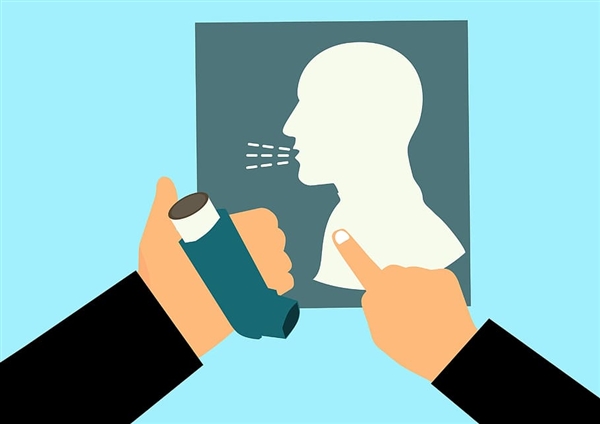Mom really doesn’t have to buy me a ventilator.
April 5
The ventilator "collective vacation" in Wuhan Thunder God Mountain hospital is waiting for disinfection and cleaning;
April 11th
The ICU ward of Jinyintan Hospital completed the clearing of COVID-19 patients;
April 14th
Thunder God Mountain hospital patients are cleared;
April 15th
Thunder God Mountain hospital officially closed the cabin
… …
At home, good news comes one after another!
Abroad, New York ordered 17,000 ventilators from China.
Even Tadpole Jun’s overseas friends said,
His mother insisted on buying him a ventilator on Taobao.
"I am so helpless. If medical ventilators can be bought on Taobao, how can there be such a shortage abroad?"
so
What is the difference between the ventilator in the hospital and the ventilator we usually say? Is it necessary for ordinary people to use medical ventilators? What kinds of medical ventilators are there?

Too long to read the version
Rescue breathing equipment can be roughly divided into:
Oxygen therapy equipment, ventilator and artificial lung (ECMO).
They have their own characteristics, and the diseases they aim at are different.
Healthy people, there is absolutely no need to buy it themselves.
Oxygen therapy equipment
When it comes to ventilators, many readers may immediately think of scenes in TV dramas. The attending doctor said, "Come on, the patient is dying." As soon as the voice fell, the nurse hurried to push the oxygen bottle. Oxygen bottles, oxygen bags and various oxygen generators on shopping websites all belong to oxygen therapy equipment.
Oxygen therapy equipment has two functions.
(1) directly provide oxygen for patients.
If we compare the human body to a jar, with one mouth sucking air and one mouth discharging waste gas, then the oxygen concentration in the jar must be kept constant because every cell needs a certain amount of oxygen. However, in some cases, the oxygen concentration in patients will drop. For example, the patient is in a plateau, and the oxygen in the air is insufficient, or the patient suffers from chronic obstructive pulmonary disease, and the trachea and bubbles are diseased, so no matter how hard he tries, he can’t breathe in too much air. What should we do? The answer is to increase the oxygen concentration in the air inlet, that is, to provide patients with higher concentration of oxygen through oxygen therapy equipment.
(2) as an oxygen source
Oxygen therapy equipment can also be connected to a ventilator as a source of oxygen. It can be seen from here that the ventilators mentioned by doctors are not the same as oxygen cylinders and oxygen generators.
Hyperbaric oxygen chamber is a special oxygen therapy equipment. In other words, it is essentially an oxygen cylinder, but it can be as big as a room. The atmospheric pressure inside is usually three times the normal pressure, and accordingly, its oxygen concentration is very high.
There are two common uses of hyperbaric oxygen chamber.
One is to deal with anaerobic bacteria, which are afraid of oxygen; The second is to treat carbon monoxide poisoning. For the human body, hemoglobin is equivalent to a trolley for transporting oxygen, and carbon monoxide can occupy hemoglobin, thus affecting the supply of oxygen. High concentration oxygen must be used to drive away carbon monoxide in order to save the patient’s life.
Because of the high oxygen concentration, hyperbaric oxygen chamber is a very prone to fire. Don’t say that playing with lighters, even static electricity accumulated on chemical fiber clothes may cause accidents. Therefore, if you need to use hyperbaric oxygen chamber treatment, you must strictly follow the guidance of medical staff.
Having said that, one more thing: all oxygen therapy equipment has a specific scope of application. Some sellers say that "regular oxygen inhalation can improve immunity and children’s performance" in order to increase the sales of oxygen generators. In fact, normal people don’t need these at all.
Noninvasive mechanical ventilation
Under normal circumstances, when inhaling, the muscles around the lungs are pulled outward to drive the alveoli to expand; Once the alveoli expand, the pressure inside is small, which can accommodate the gas from the outside. Covid-19, on the one hand, can directly damage alveoli and interfere with the expansion of alveoli, on the other hand, it will attract immune cells, and the fighting between them will inevitably cause inflammation and further aggravate atelectasis.
What should I do in this situation?
The answer is noninvasive mechanical ventilation.
Non-invasive means no wound; Machinery is the use of a ventilator; Ventilation means inhaling oxygen and expelling carbon dioxide. The motor in the noninvasive ventilator can compress oxygen, create pressure, and then, along the breathing mask, enter the patient’s lungs — — Whether the alveoli can expand or not, oxygen is directly injected into them.
Of course, this is just a general principle, which is actually much more complicated. The pressure produced by the ventilator can be positive pressure or negative pressure, which can be generated continuously or provided intermittently, and can be adjusted according to the patient’s situation; There are also many kinds of breathing masks, which can be used only for the nose, or to wrap the mouth, or to wrap the whole face of the patient.
Invasive mechanical ventilation
Pay attention to the news, and you will find that most of the ventilators mentioned recently are invasive ventilators.
The biggest difference between invasive mechanical ventilation and noninvasive mechanical ventilation is whether to establish an airway for patients. Some patients have claustrophobia and can’t accept breathing masks, some patients have facial trauma, which affects the fit of breathing masks, and some patients have a lot of sputum in their trachea, which seriously affects the effect of ventilation. Therefore, the doctor will make an incision in the patient’s trachea, insert a hose into it, and artificially establish a passage for air in and out.
Accordingly, the structure of invasive ventilator is more complicated. For example, an invasive ventilator is equipped with a battery, which can continue to work and care for patients’ lives even if the mains supply is interrupted or the emergency power supply fails in the hospital.
Therefore, the invasive ventilator is usually fully functional and can be used as a noninvasive ventilator in an emergency; Conversely, the non-invasive ventilator cannot be used as an invasive ventilator because of its limited function. This may be why most of the current foreign orders are aimed at invasive ventilators.
In vitro oxygen membrane bonding
In vitro oxygen membrane bonding is the ECMO that is often mentioned in the first two months.
Strictly speaking, it is not a ventilator.
Non-invasive ventilator and invasive ventilator are both helpers of the lung, and assist patients to breathe through masks or tracheal intubation; When ECMO is needed, it doesn’t matter whether the patient can breathe or not, it can take over breathing completely.
When using ECMO, we should first make an incision in the patient’s blood vessel to draw the blood out. Then, ECMO will expel carbon dioxide from it, inject enough oxygen and heat it properly; Finally, the blood with proper temperature and full of oxygen is sent to the patient’s blood circulation through the motor.
In other words, ECMO is equivalent to a weakened version of the time capsule, which can temporarily save the patient’s life. The key is whether doctors can find a solution to the fundamental problem in a limited time.
However, ECMO and ventilator have one thing in common: both need oxygen. During the closing period of Wuhan, many hospitals were short of oxygen because of the surge of patients. Those workers who work overtime to produce oxygen and transport oxygen are also great contributors to the fight against the epidemic.
The domestic epidemic situation has improved recently.
But before the advent of specific drugs and vaccines
Oxygen therapy, noninvasive ventilator, invasive ventilator and ECMO.
Is the most effective way for us to deal with novel coronavirus.
To make good use of them,
Not only need excellent medical staff,
But also the cooperation of manufacturing and transportation.
I hope that over time,
We can master these technologies thoroughly,
Better care for people’s health.
